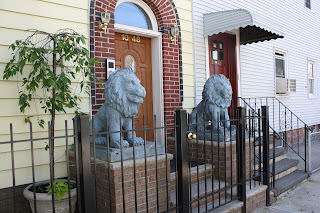Here comes Autumn. Cool days and crisp nights, when thoughts turn to relaxing in front of a blazing fire. I grew up with fireplaces at home, so I'm pretty well versed in opening and closing the flue and how to start and stoke a fire. I also have a very healthy respect for how quickly things can get out of control--whether it's a fireplace, a grill, or a gas kitchen stove. Suffice it to say...if you've burned candles in your fireplace, make damn sure you get all the wax off the bottom before you have a wood fire. And, heed the warning on a JavaLog or DuraFlame--DO NOT POKE the logs. Sparks will fly. And not in a good way.

Autumn is also a time when family and friends get all "Country Living Magazine" and gather to cook. And the Fire Department gets very busy. Outdoor firepits and chimineas are left unattended. Potholders and kitchen towels get too close to the stovetop flame, flowy sleeves on holiday blouses brush past a candle. Food Network addicts buy a blow torch from Home Depot to make creme brulee. Use a culinary propane model, for heaven's sake. He-men think it's a great idea to deep fry a turkey, for the first time, in the GARAGE. A household pet or a small child can knock over a dry Christmas tree, while you're sleeping, you've turned your attention away or you're out of the house. Turn those string lights OFF, keep the tree watered, and secure it with wire to a mantle, wall or a windowsill. Doesn't a trip to the Caribbean sound great?

I've never had to discharge a fire extinguisher, inside or outside, but I know how to use one and what the differences are. I keep THREE in the house---One on each floor for paper/wood/cloth fires and one in the kitchen. Now that I have a garage, I have one there, too.
What follows is a basic overview.
I urge you to read up on this topic further, and to make or review your exit plan, whether you live alone or have a family! Babysitters, petsitters and housesitters should be made aware, too. This is also a good time of year to change the batteries in your smoke detectors---or to install new detectors if you don't have them already.
Might want to peek at your homeowners policy, too---to make sure the value of your home is reflected, and coverage is there for replacement. While you're taking those holiday pictures or videos, pan each room so you can prove what was in there. Store the pix, CD or digital card in a fireproof box.
In the event of a fire:
1. Call 911 or your fire department directly.
2. Tell them your full address, where the fire is, and if anyone is still in the house
3. Try to extinguish if the fire has not spread
4. Get out of the house
There are MANY different types of fire extinguishers--with different contents to fight various kinds of fires. I'm going to talk about the 2 most common household types, AB and ABC.
Fire extinguishers have lettered ratings...Class A, B, C, D
A= Paper, wood, cardboard, most plastics
B= Flammable liquids, grease, oil, gasoline and kerosene
C= Electrical: appliances, wiring, circuit breakers and outlets
D= Used in chemical labs, for combustible metals
ABC is a multipurpose extinguisher with dry chemicals inside. ABC fights wood, paper and cloth fires, as well as flammable liquid and electrical fires. There will be a residue left behind that can be corrosive, so try to clean that up as soon as you can. But, things are just things---they can be replaced and YOU cannot be replaced.
**There is a Class A type that has water inside (APW air pressurized water) but you can't use that on an electrical fire, because of shock, and it will make a grease fire spread.)
Kidde markets this
Type BC fire extinguisher in white for the
kitchen. Stylin'! Let's review: BC is for flammable liquid or electrical fires. Don't be intimidated. They are very easy to use. Just pull the pin out (it's red), aim, and squeeze the handle.
To put out a cooking fire:
Call the Fire Department or 911. If the fire is out by the time they get there, they will at least look around and make sure you and your house are OK. Make the call. Embarassment fades, they've seen it all. It's their job. Don't cook naked. For soo many reasons.
1. If it's a stovetop fire in a pan with grease or oil, slide a pan lid over the flames to smother the fire. Turn off the heat and leave the lid in place til it's cool. Do not take a flaming pan outside--you could ignite your clothing or dry grass.
2. For other food fires, pour baking soda over the flames. NEVER use water or flour on cooking fires. After you read this blog posting, put Baking Soda on your shopping list. A big box is good to have handy--it's not just for baking!
3. If the fire is in the oven or broiler, keep the door SHUT and turn off the heat to smother the fire.
Invest the money in a few fire extinguishers, smoke detectors, fresh batteries and take a few minutes to read the instructions and familiarize yourself with the do's and don'ts. Enter the Fire Dept # in your cell phone, or your speed dial if you have a landline. Your heart's gonna race, you'll yell expletives, but you'll have a cooler head and can minimize the damage if you know a few tips ahead of time.
Next up, how to prevent drowning and swine flu when bobbing for apples...
Happy Autumn!
































